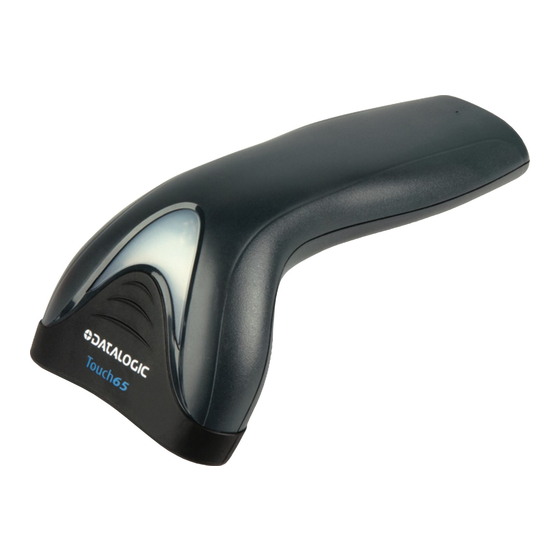
Datalogic Touch 90 pro Product Reference Manual
General purpose corded handheld contact imager bar code reader
Hide thumbs
Also See for Touch 90 pro:
- Quick reference manual (4 pages) ,
- Quick reference (22 pages) ,
- Manual (2 pages)














Need help?
Do you have a question about the Touch 90 pro and is the answer not in the manual?
Questions and answers
I'm am having a problem with getting the scanner to talk to the host. my scanner is plugged into a USB. When I use the scanner it beeps but the information is going nowhere. My IT department got it to work temporally but it's stopped again. What configurations do I use? I'm in the UK.
@kirsten Affleck In the Aladdin configuration page Select User Interface Communication Interface is set to USB-COM On the Interface Selection section (in the manual) which interface should I scan?
To configure the Datalogic Touch 90 Pro scanner to communicate with the host via USB, follow these steps:
1. Install the Interface Cable – Connect the USB interface cable to the scanner.
2. Connect to Host Interface – Plug the USB connector into the host device.
3. Select USB Interface – Scan the appropriate USB interface selection barcode to set the scanner to USB mode.
4. Configure USB Settings – If needed, adjust USB-specific settings such as:
- USB Suspend Mode
- USB Keyboard Speed
- USB-OEM Interface settings
5. Verify Host Communication – Ensure the scanner is programmed for the correct host type by scanning the appropriate host type barcode.
Refer to programming barcodes in the Product Reference Guide to complete configuration.
This answer is automatically generated
Hello, I have a barcode reader I have a Touch90 Now with the code it reads, it consists of 30 characters. I'm going to make some changes so that you can read 50 characters, is this device capable of doing that?
Yes, the Datalogic Touch 90 Pro barcode reader is capable of reading 50-character codes. The length can be set from 1 to 50 characters.
This answer is automatically generated
Configuring touch 90 to scan QR codes